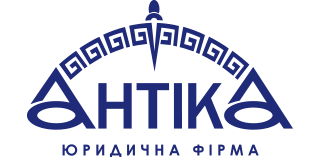02.08.2019
Kyiv Post
Стаття доступна англійською мовою
According to the Law on the Electricity Market, the electricity market started operating in Ukraine from July 1, 2019. The law foresees a departure from the manual regulation of electricity tariffs (except for natural monopolies — the tariff for distribution and transmission) and free pricing for electricity.
The absence of a large number of electricity producers, a high concentration and “manual mode” of market pricing have led to serious price distortions when the cost of thermal generation is higher than the European one and the cost of nuclear power is lower.
According to Ukrenergo, the average price excluding the tariff of the distribution system operator and without the margin of the electricity supplier was about 2.08 thousand UAH per MWh (excluding VAT), which is 30% higher than the June WMP at 1.62 thousand UAH per MWh. This calculated amount is averaged for the first and second class consumers.
The electricity supply market is dynamic, generation capacities are not developed, and sources of unbalance coverage are limited. It is possible to cover the cost of balancing capacity through thermal generation and the cost of such services can increase rapidly. Requests for load units at different times of the day satisfy on average only 55% of the amount of reserves needed to balance the grid. After all, there is still no segment of ancillary services, that is, “pay for the goodwill” of manufacturers to provide services for balancing the grid.
The new market model requires consumers to plan responsibly, otherwise there will be significant costs, both in the event of a significant deficit and a surplus. The shortage of purchased electricity (deviation from the plan on the high side) will be balanced by the supplier at the expense of the consumer at a price above the market level “a day in advance.” The surplus of already purchased electricity must be sold by the consumer at a price below the market level “a day in advance”.
The Ministry of Energy noted that the additional costs to cover the imbalances in the grid, which would arise due to unpredictability, could amount to EUR 300-900 million.
There are also a number of other factors that have a direct impact on pricing.
First of all, the debt of state and municipal enterprises in the current energy market, which is about 36 billion UAH.
Secondly, payments to producers at the “green” tariff level. The “green” tariff is an increased payment for clean energy guaranteed to operate until 2030. The “green” tariff is 10 times higher than the payment for electricity from nuclear power plants. In addition, the “green” tariff in Ukraine is on average 1.5-2 times higher than the price of “green” energy in EU countries. According to the estimates of the Ministry of Energy, due to the massive launch of new alternative energy projects in 2019, already from 2021 green energy will have to pay more than 40 billion UAH a year, not last year’s 17 billion UAH.
Imports are also limited; Ukraine’s energy system is isolated from the EU. The only way to increase competition is through a strong regulator and ACU, and special measures to increase competition, as well as purely market mechanisms — first of all, the unhindered import of electricity and free access to new producers and the implementation of investment programs, transparent and effective control and oversight tools.
Also the upgrading of the IT infrastructure, which did not pass the required and full test mode of operation for all market segments, is an issue. During the day-to-day bidding, difficulties arose due to the malfunctioning of XMTrade Market Operator software. This is stated in a letter from the electricity supplier of “Verax Energy” LLC, addressed to GE “Market Operator.” As a result, market participants complain that there has been no proper bidding for the purchase/sale of electricity.
Particular attention should be paid to ensuring non-discriminatory network access for wholesalers and electricity buyers, with a view to creating competition between them, including mechanisms for efficient distribution and avoiding network bandwidth limitations among its users. In order to separate the prices for electricity and related services supplied by competing sales organizations from the regulated component of tariffs for the use of backbone and distribution networks, the retail tariffs for the components are implemented accordingly, which allows consumers to choose between competing sales organizations.
Also important is the lack of an approved European regulation on energy market monitoring (REMIT regulation), which regulates the issue of sanctions for price manipulation and collusion.
In summary, it is important to remember that the primary objective of liberalization is to maximize energy efficiency by creating a competitive environment that meets the basic requirements of consumers:
— ensure the market level of prices, their stability and the predictability of change through the widespread introduction of incentive tariffs;
— create an opportunity for the free generation of electricity for new facilities or increase the consumption of existing ones;
— improve the quality of service: the reliability and quality of electricity supply in the conditions of activation of development of renewable energy sources.
We hope that all market participants will draw conclusions and, in the operational mode, start preparing technical solutions, take over the legislative framework and develop a scheme to cover imbalances as soon as possible.
